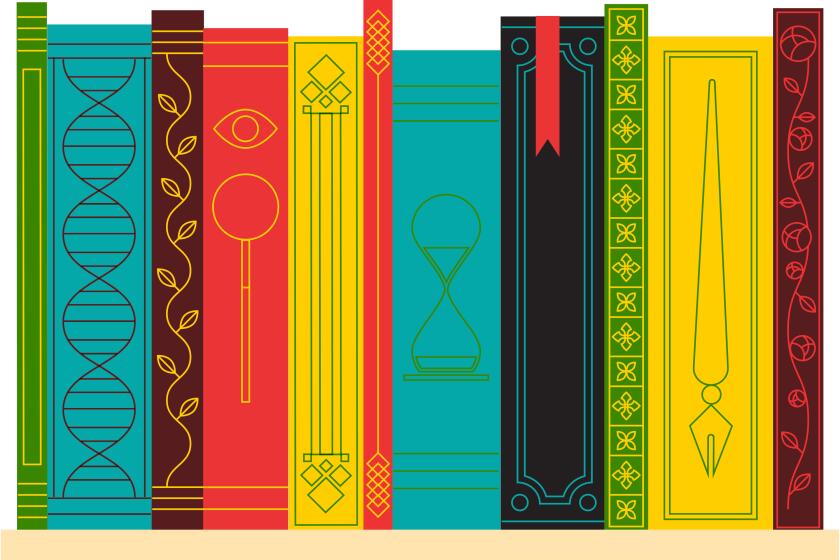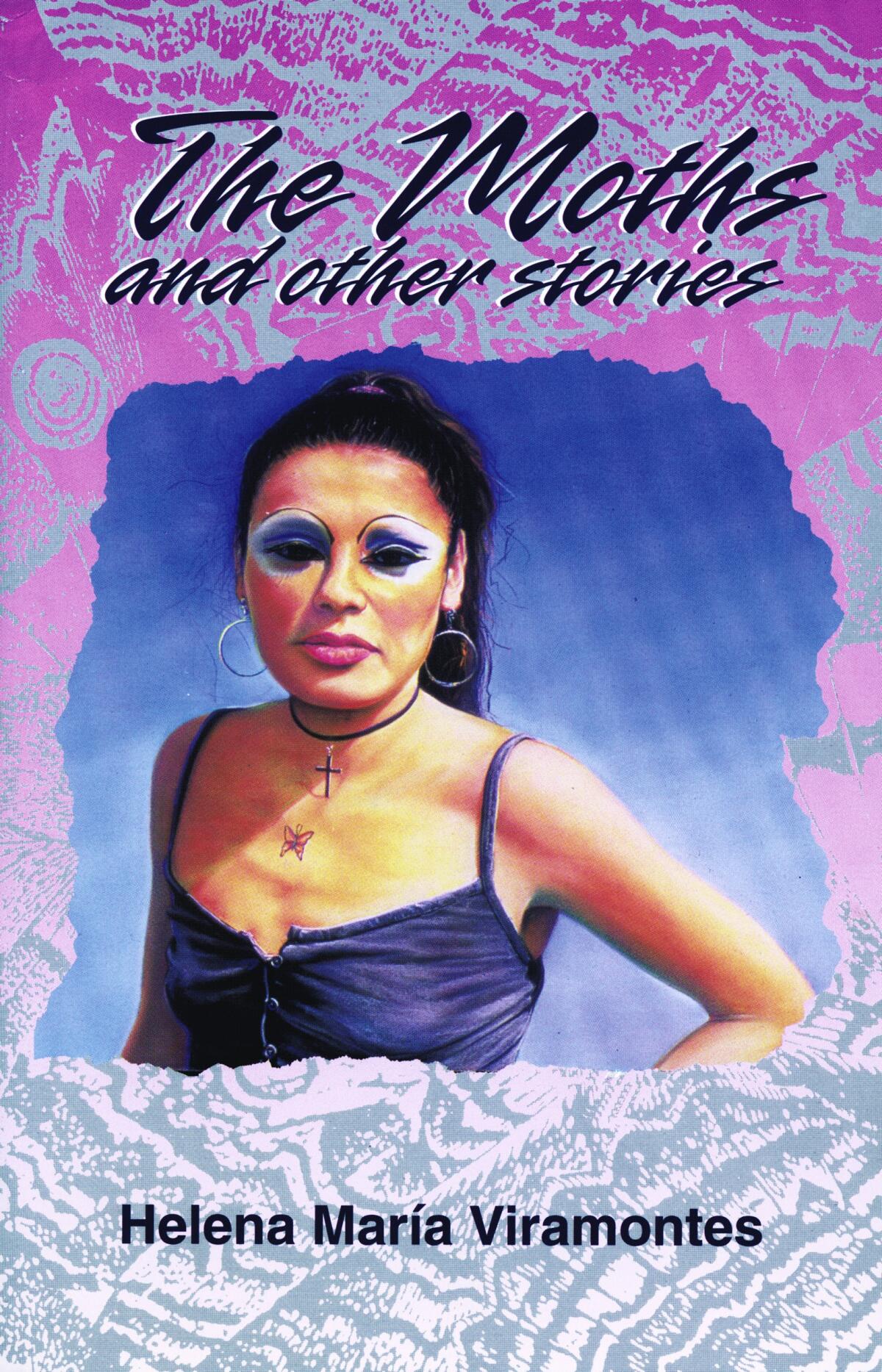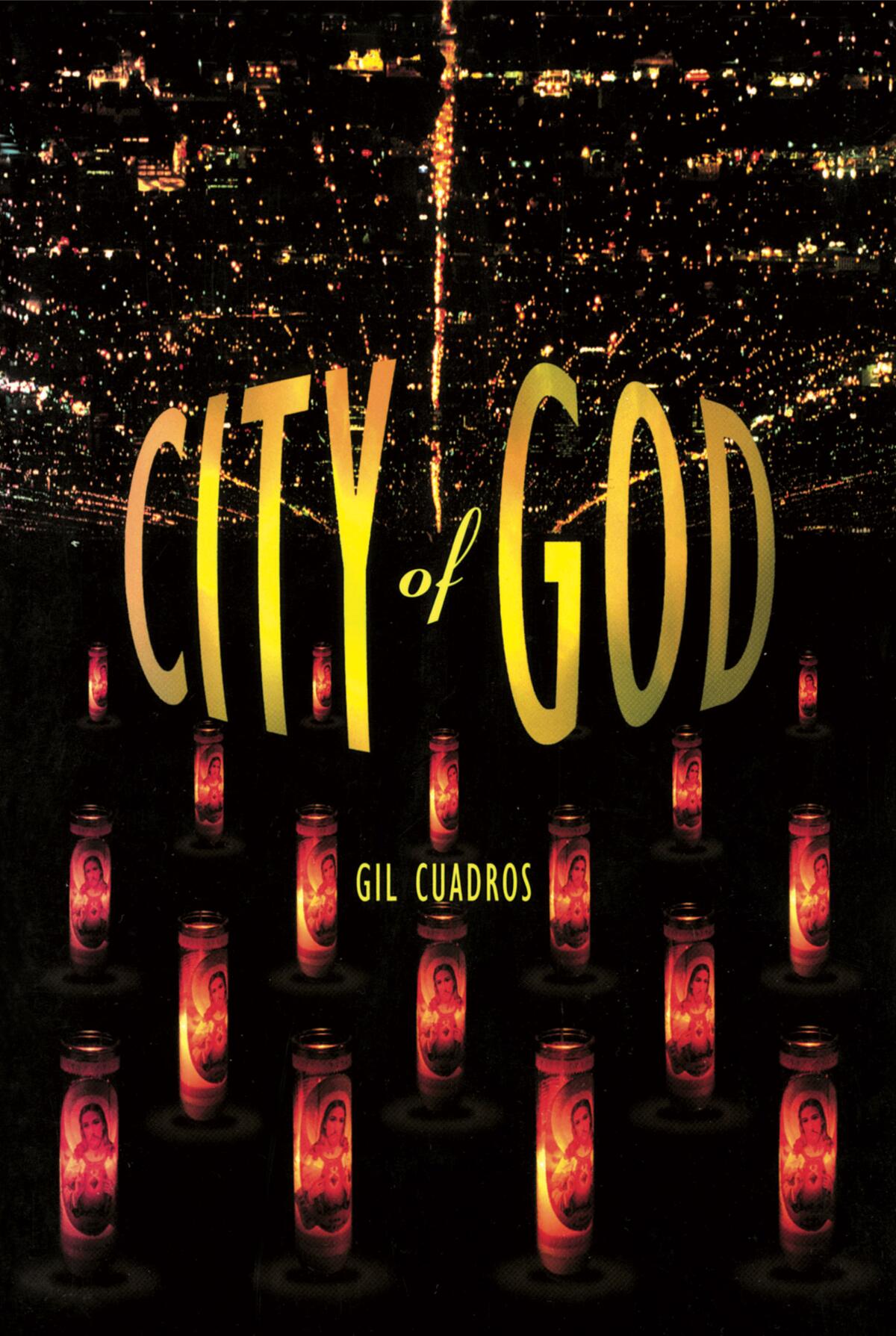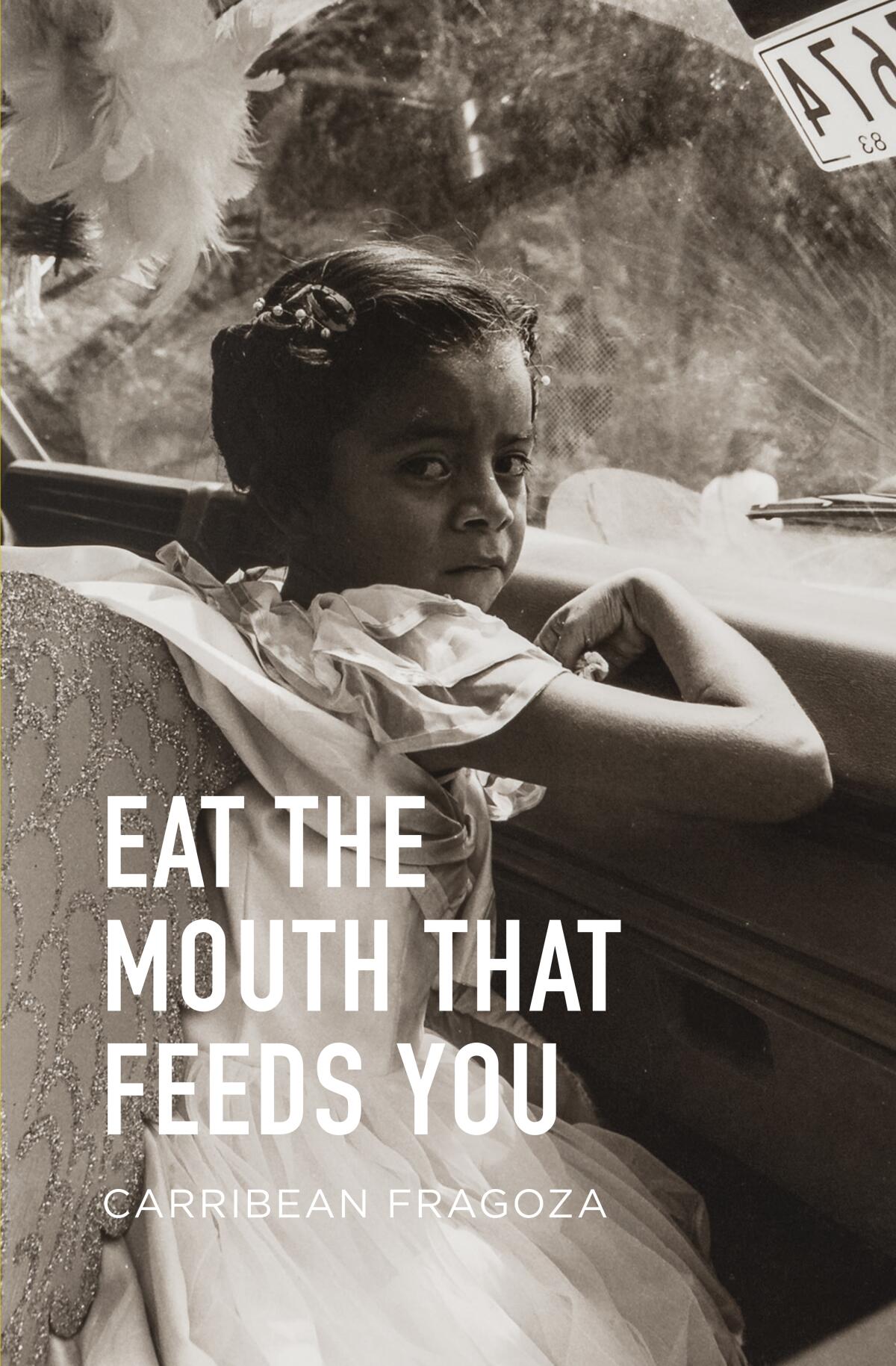For our Ultimate L.A. Bookshelf, we asked writers with deep ties to the city to name their favorite Los Angeles books across eight categories or genres. Based on 95 responses, here are the 13 most essential L.A. short stories or story collections, from a Japanese-language proto-noir to Fitzgerald, Wodehouse, Bradbury and generations of Chicano pioneers.
- If you buy books linked on our site, The Times may earn a commission from Bookshop.org, whose fees support independent bookstores.
…
Lament in the Night by Shoson Nagahara, 1925
If Nagahara’s noirish novella about a Japanese immigrant battling with his demons feels like forgotten history, in fact it was. Though reviewed at the time in the Japanese-language daily Rafu Shimpo, it remained largely unknown until Kaya Press published a translation in 2012. The dark Little Tokyo alleys through which Ishikawa Sakuzo wanders — begging for change, cadging meals, working to conquer his homesickness and self-hatred — are every bit as Angeleno as Chandler’s and West’s. Sakuzo’s milieu is highly specific and segregated, but his struggle is existential, his dark lament universal. — BK
The Rise of Minna Nordstrom by P.G. Wodehouse, 1933
Socked away at the back of the collection “Blandings Castle and Elsewhere” are the five “funniest short stories about Hollywood ever written,” per Michael Hiltzik. The satirist aims his ageless wit on a Prohibition-era entertainment industry still vamping its way out of Vaudeville. The standout story features the wily, overacting Minna Nordstrom, née Vera Prebble, who secures herself a star contract (and forces the merger of several studios) by blackmailing every producer with a secret liquor stash. The Brit takes on corruption, desperation and hackery with impeccable timing and a feather-light coup de grâce. — BK
The Pat Hobby Stories by F. Scott Fitzgerald, 1940-1941
It’s a common myth — but still a myth — that Hollywood destroyed Fitzgerald (he died here in December 1940 after lunch at Greenblatt’s Delicatessen). In his final years, he worked on the unfinished novel “The Love of the Last Tycoon” and wrote a series of sweetly satirical stories about a screenwriter named Pat Hobby and his misadventures. Fitzgerald was hard up for money, and he sold each story to Esquire for $250. And yet, these charming pieces represent not work for hire so much as a kind of busman’s holiday, in which the author could let down his guard. — DLU
A Sound of Thunder by Ray Bradbury, 1952
On June 28, 1952, L.A.’s sci-fi maestro published this short story in Collier’s magazine, and nothing was ever the same again. It begins with rich time-traveling tourists hunting a Tyrannosaurus rex — 38 years before Michael Crichton wrote “Jurassic Park.” And it ends with one of them stepping on a butterfly and changing the course of history — 20 years before the chaos theoretician Edward Norton Lorenz propounded the “butterfly effect.” This massively influential work doesn’t just describe the butterfly effect — it demonstrates it. — DK
Natica Jackson by John O’Hara, 1966
Hollywood did a lot more for this great fiction writer — giving him some of his best material — than he ever did for Hollywood as a slumming, indifferent screenwriter. The collection “John O’Hara’s Hollywood” gathers almost 400 pages of his sketches and stories, none better than this incredibly observant, finally shocking tale of a successful actress and her affair with a married man. Adapted by screenwriter Andy Wolk into a really good 1987 TV movie with Michelle Pfeiffer, it makes you want to spend all day just listening to that assured, insinuating, pseudo-anthropological, matchless O’Hara voice. — DK
The Moths and Other Stories by Helena María Viramontes, 1985
This collection reads as a sinuous retort to Viramontes’ professors, who told the East L.A. native she shouldn’t write about Latinos. “The Moths” spans decades and locales — El Salvador’s civil war, the Mexican Revolution, Tijuana and especially the Eastside — with haunting, impressionistic tales of Latinas facing a world stacked against them. Escape usually comes via tragedy: A wife murders her abusive husband, an elderly mujer stands up to gang members she remembered as sweet boys. Viramontes’ prose jumps between tenses, perspectives and styles so much you find yourself reading each story multiple times — to understand it but also to sit in awe of her gorgeous dexterity. — GA
A Hollywood Education by David Freeman, 1986
In the kind of Times review that makes enemies weep and the gods jealous, Carolyn See called this “the best book anybody has ever written about Hollywood, ever, one book in a thousand … a knockout.” It’s a wonder Freeman, also the screenwriter of the sadly unsung “Street Smart,” didn’t stroke out on the spot. This glorious book is a sneaky novel in story-collection drag — best read in a corner booth at Du-par’s, behind a Tiny’s patty melt and a slice of bread pudding, catty-corner from the Writers Guild. — DK
City of God by Gil Cuadros, 1994
Cuadros opened his potent mix of stories and poetry by sharing that, in 1987, he was diagnosed with AIDS and given two years to live. “Writing literally saved or at least extended my life,” he wrote. Before he died in 1996, Cuadros left behind this remarkable gift, an unflinching look at the unique abuse gay Chicanos endured in Los Angeles. Broken into three acts, this intense work depicts the rejection they often faced in Latino families, the empowerment spurred by sexual freedom, the menacing impact of the epidemic and the personal toll on Cuadros and his friends. L.A. is his Aztlán, but it is as battered as his characters. — ILR
Every Night Is Ladies’ Night by Michael Jaime-Becerra, 2004
For some readers, this collection of interwoven stories will sound like home. Others will be fortunate to gain a special glimpse into Latino life in the San Gabriel Valley. The pieces are mostly set in the 1980s and chronicle adolescent mischief, a search for love and the struggle to make ends meet. There is an effortlessness and economy of language that Jaime-Becerra somehow achieves while swiftly bringing a community of richly drawn characters to life. El Monte factors into each narrative, alternately serving as a comforting base or a relentless barrier. — ILR
The Golden Gopher by Susan Straight, 2007
Narrated by a “walking fool” cycling through “rememories” of her youth among the inland orange groves, ending with an off-stage death that calls the narrator’s big-city escape into question, one of Straight’s few stories set in L.A. proper (and published in the anthology “Los Angeles Noir”) is really “about the haunted and lost of downtown,” says Tod Goldberg, “back before they tried to gentrify the bad places. This is a story about the beating heart of the past and the spectral remnants which still walk the streets, just outside your line of sight.” — BK
The Burglar by Sarah Shun-lien Bynum, 2016
A prowler enters a fixer-upper, the (briefly) empty home of a couple just starting to make TV-writer money. The writer, meanwhile, struggles with an “edgy” thriller touching racial third rails he suspects he’s been hired to smooth over as the token Black man. His wife heads home, head full of not-so-modest dreams. In this delicate ouroboros of a story that author Aimee Bender calls “so smart and nuanced,” Bynum constructs a stunning, suspenseful parable of the Hollywood dream, post-millennial edition, one only nominally more attainable than it once was, and no less compromised. — BK
Eat the Mouth That Feeds You by Carribean Fragoza, 2021
Fragoza’s first collection is a game-changer, 10 stories that grow out of a series of overlapping traditions: fantastical, feminist, always engaged with the complications of identity and place. In “Crystal Palace,” a woman recalls working in a Guadalajara shop, where she inadvertently witnessed her proper boss melt down over love. In “Me Muero,” a young woman lives (that’s the only word for it) through her own death. At the heart of each story here is the sense of something elemental underneath the surface. “She’s at the fore of the next generation of San Gabriel Valley writers,” Jaime-Becerra says. — DLU
Fiona and Jane by Jean Chen Ho, 2022
Ho’s linked stories take friendship as a subject deeply seriously. Fiona and Jane meet in second grade among the Taiwanese immigrant community of L.A., grow apart and back together, spend some nights drinking and others on long-distance phone calls. Secrets are shared and betrayed, resentments simmer and boil, and the result is a layer cake of life as it’s really lived. “A closer read of my L.A. youth than anything I’ve ever written,” says Jade Chang, author of “The Wangs vs. the World.” “Jean writes characters who are so horny and joyous and yearning, the truest inhabitants of our deeply alive city.” — BK
















